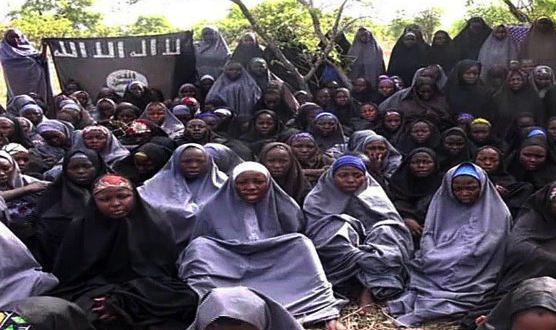You may have already heard about the abduction of over 300 teenage girls in Nigeria recently, on April 14th. It’s been nearly three weeks since the terrorist group, Boko Haram, has kidnapped the teens, and efforts made by the Nigerian government have not yet been great enough to help the cause.
Boko Haram is a militant and terrorist organization in the northeast of Nigeria. They are not particularly new, as they came about in 2003. Their terrorist attacks have been relatively numerous, including an attack in a Government secondary school in Mamudo that killed 42 students and staff in July of 2013. In February of 2014, another school was attacked and 40 students were murdered in numerous ways, all of them between the ages of 11 and 18.
This abduction of the Nigerian teenage girls is not the first to have occurred; however, this particular one took place soon after a bombing attack on a train station that killed over 70 people, and then the kidnapping took place right from the young women’s own school, being carted away and held at gunpoint. Roughly 50 of them were able to escape by jumping off of the back of the trucks into Nigeria’s Sambisa forest, which also happens to be the Boko Haram hideout at which kidnapped females are being held.
One way in which the entire ordeal has been made known is through the #BringBackOurGirls, which has become a trend on Twitter and other social media websites. While the presence of the hashtag might not directly aid in the halt of this entire mass abduction, it has definitely attracted the attention of Americans, Europeans, and is causing actual protests as well. The hashtag is causing a large buzz in Nigeria, and the Obama administration also has jumped into the effort, helping President Goodluck Jonathan of Nigeria in getting back the schoolgirls. At this particular time, Nigerian police are offering $300,000 for the return of the girls. In addition to this, Goodluck Jonathan has assembled a ‘fact-finding committee’ to draw together all of the “public interface” concerning the ordeal. Meanwhile, daily protests in Abuja continue to take place since April 30, alongside sit-ins and rallies across the country of Nigeria.
With regard to these events, the Sambisa forest mentioned earlier has become a place to beware of in Nigeria, although just months ago it was nothing to think of. Now, instead of being a hotspot for game, as colonialists had initially intended, it is a known campground for Boko Haram. The families of the abducted schoolgirls have threatened to enter into the forest themselves to recover their daughters and sisters.
Despite knowledge of the hideout, it is not as simple as it may seem to recover the young women. The Sambisa forest is complicated and well known by Boko Haram. The location of the girls, who are supposedly being/are going to be sold into slavery or wed to ‘unclean’ men, is constantly altered so that the location of them cannot be not pinpointed. If military tanks were to enter into the forest, it would have to be done with high knowledge of the geography of the forest.
As made evident by the information known so far about the girls’ conditions, it is not for sure how long it will be until the girls are back home. Boko Haram is under tight discretion as of the hashtag increasing awareness of the tragedy. Even their smallest attacks, which might usually not cause much blunder outside of Nigeria or Africa as a continent, is now causing flashes in the world of international news. At this point, we can only hope for the girls and families of Nigeria, and that the Nigerian government is able to find a solution to this unthinkable ordeal.

